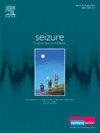Tough to treat: What we know about managing PCDH19-related epilepsy - Systematic review
IF 2.8
3区 医学
Q2 CLINICAL NEUROLOGY
引用次数: 0
Abstract
Background
PCDH19-related epilepsy is a rare, X-linked developmental and epileptic encephalopathy that primarily affects heterozygous females. It is caused by pathogenic variants in the PCDH19 gene, encoding protocadherin-19, a calcium-dependent adhesion protein involved in neurodevelopment. The disorder’s hallmark is cellular interference, leading to brain mosaicism and clinical features including early-onset clustered focal seizures, cognitive impairment, and frequent comorbidity with autism.
Objective
This review synthesizes current evidence on treatment approaches for PCDH19-related epilepsy, covering conventional anti-seizure medications, adjunctive therapies, and non-pharmacological interventions, while highlighting emerging strategies and research gaps.
Methods
A systematic literature search was conducted in PubMed and Scopus (January 2008 – April 2025).
Results
27 studies were included, involving patients with genetically or clinically confirmed PCDH19-related epilepsy and reported treatment outcomes. The condition is often pharmacoresistant, with highly variable responses. Levetiracetam, especially when initiated early, showed the most consistent seizure reduction, followed by clobazam and potassium bromide. Topiramate and stiripentol showed potential in isolated reports. Carbamazepine was often ineffective or worsened seizures. Adjunctive agents – including corticosteroids, ganaxolone – had variable efficacy; ganaxolone showed promise in recent trials. Non-pharmacological interventions, like vagus nerve stimulation, ketogenic diet, and temporal lobectomy, reduced seizures in some cases but lacked standardized evidence.
Conclusions
Treatment remains challenging due to clinical heterogeneity and limited high-quality data. Early, individualized, multimodal approaches appear most beneficial. There is a need for genotype-informed, multicenter trials and standardized outcome measures to guide evidence-based care.
难以治疗:我们对管理pcdh19相关癫痫的了解-系统回顾
pcdh19相关癫痫是一种罕见的x连锁发育性癫痫性脑病,主要影响杂合子女性。它是由PCDH19基因的致病性变异引起的,该基因编码原钙粘蛋白-19,一种参与神经发育的钙依赖性粘附蛋白。这种疾病的特征是细胞干扰,导致大脑嵌合体,临床特征包括早发性聚集性局灶性癫痫、认知障碍和经常与自闭症共病。目的本文综述了目前pcdh19相关癫痫的治疗方法,包括常规抗癫痫药物、辅助治疗和非药物干预,同时强调了新兴策略和研究空白。方法系统检索2008年1月~ 2025年4月PubMed和Scopus的相关文献。结果纳入27项研究,涉及遗传或临床证实的pcdh19相关癫痫患者和报告的治疗结果。这种情况通常是耐药的,反应变化很大。左乙拉西坦,特别是在早期使用时,表现出最一致的癫痫发作减少,其次是氯巴唑和溴化钾。托吡酯和斯立哌醇在个别报道中显示出潜力。卡马西平常常无效或加重癫痫发作。包括皮质类固醇、加那洛酮在内的辅助药物疗效不一;加那洛酮在最近的试验中显示出了希望。非药物干预,如迷走神经刺激、生酮饮食和颞叶切除术,减少了某些病例的癫痫发作,但缺乏标准化的证据。结论由于临床异质性和有限的高质量数据,治疗仍然具有挑战性。早期的、个性化的、多模式的方法似乎是最有益的。需要有基因型信息的多中心试验和标准化的结果测量来指导循证护理。
本文章由计算机程序翻译,如有差异,请以英文原文为准。
求助全文
约1分钟内获得全文
求助全文
来源期刊

Seizure-European Journal of Epilepsy
医学-临床神经学
CiteScore
5.60
自引率
6.70%
发文量
231
审稿时长
34 days
期刊介绍:
Seizure - European Journal of Epilepsy is an international journal owned by Epilepsy Action (the largest member led epilepsy organisation in the UK). It provides a forum for papers on all topics related to epilepsy and seizure disorders.
 求助内容:
求助内容: 应助结果提醒方式:
应助结果提醒方式:


